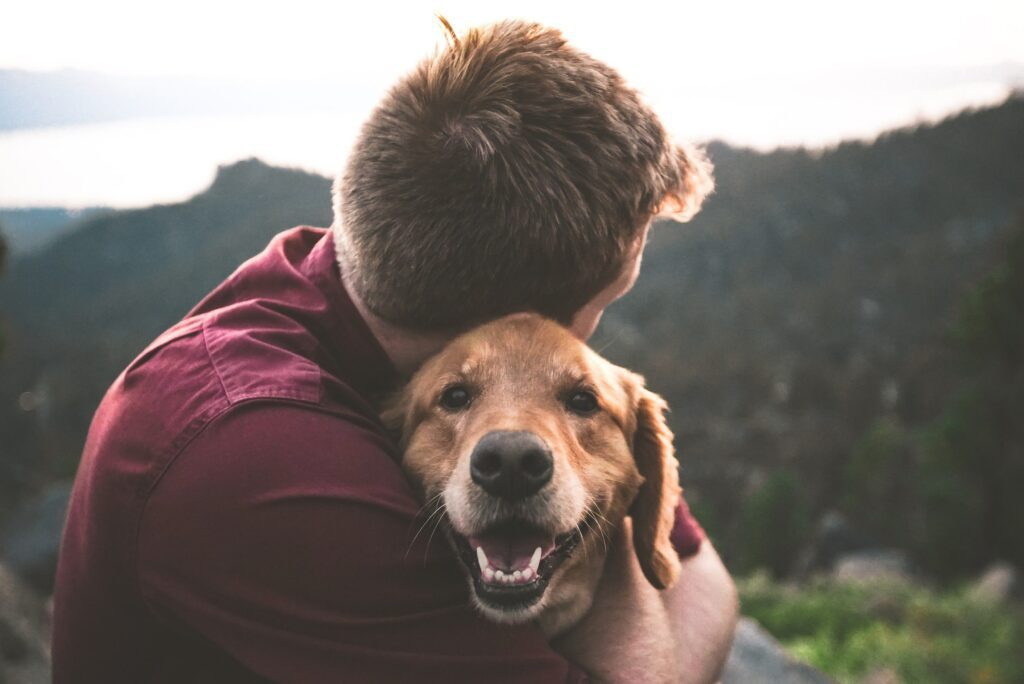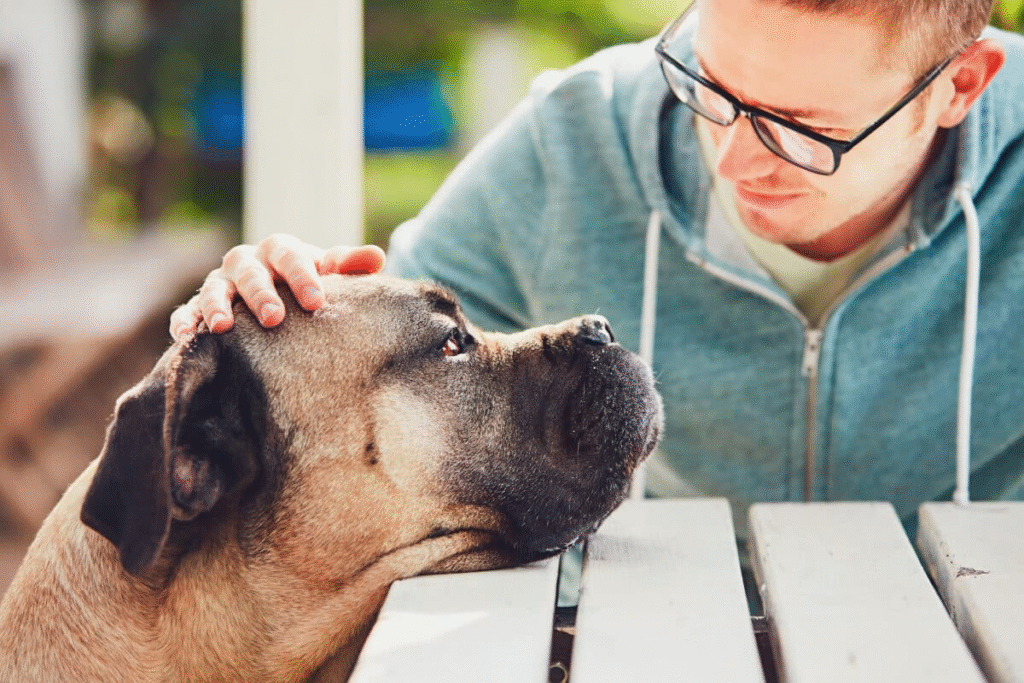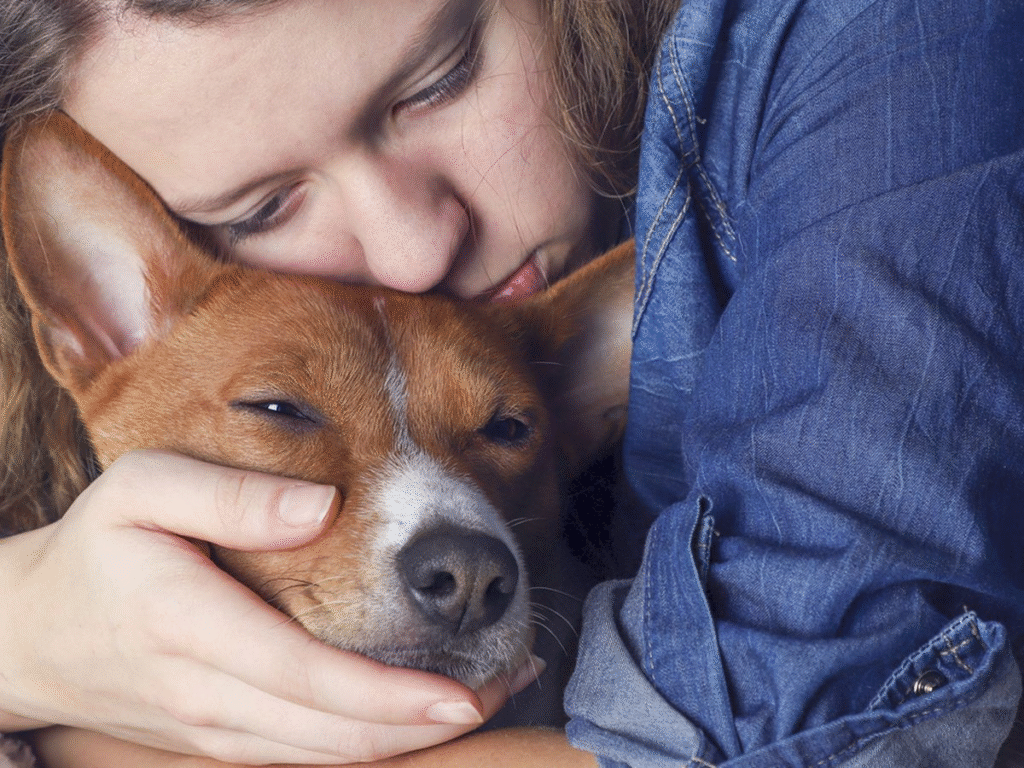Our relationship with our dogs explores the family domain rather than only friendship. They provide relentless affection, lighthearted entertainment, consoling presence, and become natural threads in the fabric of our everyday life. Their death so creates a hole that speaks to us very strongly. As we treasure the happy times we spend together, so too is an equally important part of respecting this close relationship acknowledging and gently negotiating their last hours. Saying farewell to our pets is a necessary gesture of love and respect even if it could seem difficult and emotionally demanding. Accepting these last chances to connect not only makes our dear friends comfortable but also creates the foundation for our own recovery path. This post seeks to gently lead you through the great significance of bidding farewell and how to really treasure those priceless final moments with your pets thereby guaranteeing a calm transition for them and closure for you. – The Importance of Saying Goodbye

Understanding the Significance of Final Moments with Pets
The last minutes you spend with your pet have great meaning that usually beyond our immediate awareness. These represent the climax of your shared past, a last chapter in your entwined life, not only the last breaths they take. Realizing their intrinsic worth and the long-lasting effects they have on your pet’s tranquility as well as your own mental well-being will help you to really understand the importance of these last moments with your animals. Hurrying through or avoiding this time might unintentionally deprive both of you of a priceless chance for closure and connection. When we deliberately savor the last hours, we provide our dogs love and protection while they negotiate their change of life. During a period of vulnerability, their feeling of our presence, soft touch, and calming voice tone can help them greatly relax.
Think about this: our dogs depend totally on us for their welfare during their lifetime. This reliance is even more noticeable in their last phases. Being present and sensitive to their needs helps us to play the loving guardianship role right up until the very last. Furthermore, these times present us a special chance to show the depth of our love and thanks for the several ways they have improved our life. These apparently little gestures—a soft brush, a whispered word of affection, a peaceful moment spent in their company—have great weight and generate lifetime memories. On the other hand, ignoring these last hours could cause unresolved anguish and regret. The “what ifs” and the sense of lost chances remain and complicate the healing process. Acknowledging your pet’s small signals—a change in their respiration, a softening of their gaze, a little tilt toward your touch—helps you to react with compassion and offer the comfort they require. Though brief, these last exchanges serve as evidence of the strong link you two have and open the path for a more quiet goodbye.
Recognizing When It Might Be Time to Say Goodbye to Your Pet
Choosing when the time comes to say goodbye is one of the most heartbreaking features of pet ownership. Our great affection for our friends sometimes makes it challenging to evaluate their quality of life impartially. Responsible pet ownership, however, depends critically on the ability to identify declining indicators and know when their pain exceeds their happiness. It’s about giving their comfort and well-being first priority even if it means great suffering for ourselves. Many signs point to your pet’s health seriously declining. Usually among the first symptoms are changes in mobility and activity levels. An once-active dog may find it difficult to get up, while a frisky cat may withdraw and grow hesitant to move. Furthermore important signs of underlying medical problems or a general decrease in body processes are loss of appetite and weight. Clearly indicating decreased quality of life is noticeable increases in pain or suffering independent of medicine. This could show itself as limping, panting, whimpering, or a resistance to being handled in some places.
Moreover, changes in interaction and behavior might be really informative. While a typically independent animal could become attached because of illness, a normally friendly pet may get angry or aloof. A notable drop might also be indicated by trouble with simple tasks as eating, drinking, and cleaning without help or by accidents. Speaking candidly and honestly with your veterinarian is really vital. They can help you grasp the likely course of your pet’s illness, offer an objective evaluation of their health, and go over possible diagnosis and prognoses. Sometimes depending just on your feelings clouds your judgment and makes it more difficult to see whether your pet is actually in pain. Think on your pet’s general well and contentment. Can they still participate in past favorite activities? Still do they have happy and contented times? It may be time to think about the tough choice if their days involve more suffering and misery than happy events.
It’s also crucial to differentiate between curable diseases and the normal aging or terminal illness related decrease. Although in certain circumstances vigorous therapy may extend life, it’s important to ask if it actually enhances your pet’s quality of life or just helps them to suffer less for your personal benefit. Although somewhat difficult, the decision of euthanasia is usually the most caring and compassionate one we can make for our dogs when their quality of life has significantly dropped and cannot be restored. Navigating this tough choice might be easier if one understands the goal and advantages of euthanasia: to alleviate suffering and offer a peaceful finish. Ensuring they do not go through needless suffering or misery, it is the last act of love.
Preparing for Saying Goodbye: Practical and Emotional Steps
Once the tough choice to say goodbye has been taken, either because of poor health or an unanticipated event, the emphasis moves to being ready for this change with both pragmatic plans and mental strength. Ensuring a quiet and respectful farewell for your pet and helping your own emotional well-being during this trying period depend on this planning.
Practical preparations entail various logistical issues. Talking about your choices with your veterinarian comes first. This covers choosing the scene for the last seconds. Choosing at-home euthanasia lets many pet owners feel better as it lets their animal die in a familiar and comfortable surroundings surrounded by loved ones. The veterinary clinic offers a professional and regulated environment instead. Talk to your veterinarian about the advantages and disadvantages of every alternative to help you and your pet choose the one that seems best. You also have to think about aftercare plans. This covers determining whether you would want cremation or burial. Your veterinarian can tell you about local pet cremation companies or rules on pet funerals in your neighborhood. Making these plans ahead of time will help to reduce some of the immediate aftermath’s stress. Arranging the meeting at a time that seems as calm and leisurely as feasible is also sensible. Make sure additional family members, should they choose to bid farewell, may be here. In their last hours or days, get your pet in a serene and pleasant surroundings. This might include bringing their selected location their preferred blankets, toys, or bed. Make sure they are in a peaceful environment and have simple access to water.
Regarding emotional and psychological readiness, it’s important to accept and validate your own anguish and loss. Let yourself experience the feelings that come up free from control. Talking to loved ones—family members, friends who know your relationship with your pet, or even a pet loss support group—can offer solace and a forum for you to express your emotions. Thinking back on joyful events with your pet might provide solace and let you to concentrate on the happiness they brought into your life. Review pictures, watch movies, and tell others your best tales. Accepting the inevitable and concentrating on giving your pet love and comfort in their last hours may help you to psychologically prepare for the farewell. This might call for merely spending quiet times to consider or for learning mindfulness. Additionally crucial is taking into account how other members of your family, particularly youngsters, are adjusting and giving them age-appropriate information and assistance. Dealing with the emotional as well as the pragmatic elements of saying goodbye can help you to negotiate this trying period with more clarity and guarantee a more heartfelt departure for your beloved friend.

Cherishing the Final Moments: Making Them Meaningful
Though brief, the time before bidding a dieu to your cherished pet presents a priceless chance to make lifelong memories loaded with love and compassion. Approaching these last minutes with your dogs with presence and intention can help you to concentrate on making them as comfortable and significant as possible for both of you. First and most importantly is establishing a caring and peaceful environment. Talk to your pet softly and gently so they may hear the usual cadence of your adoration. A peaceful surroundings and soft lighting may also help one to feel calm.
Spending special time with one other in these last hours might manifest itself in several ways. Simple hand resting on them, gentle petting, or stroking their fur can all help to greatly soothe and reassure them. Offer your pet their preferred goodies in moderation if they are still able to enjoy them. Another way to establish a relationship is to read to them or gently go over treasured recollections. The most important thing should be giving them your whole attention and showing your affection via vocal affirmations and physical contact. Spend some time considering the happiness and company your pet has given during their lifetime. Consider their quirky habits, relentless allegiance, and pure love they have freely offered. Let yourself be very appreciative of them being in your life.
Cherishing these last moments mostly depends on your actively expressing of love and thanksfulness. Tell them how much they mean to you and how appreciative you are of the time you spent, from your heart. Your voice and loving purpose will most certainly be sensed even if they are weak or unresponsive. Some pet owners find solace in timing pictures or videos throughout this period. These might be treasured souvenirs in the future, enabling you to remember and look back on these last hours with love. Still, it’s only advisable to do this if it comes naturally and won’t take away from your pet’s present-ness. If you have additional family members, let them to bid their farewells whatever they like. In their individual grief process, this might represent a major turning point. At the end, appreciating the last hours is about being totally there, loving your pet, and making a calm and loving change for them. It’s about appreciating the great influence they have had on your life and respecting that link right through to the very end.
Saying Goodbye: What to Expect During the Final Moments
Especially if you have decided on euthanasia, the actual time of bidding farewell to your pet can be emotionally charged. Knowing the procedure and what to expect will assist you to reduce some tension and let you to concentrate on giving your dear friend comfort. Should you have chosen euthanasia, your veterinarian will walk you through the process ahead. Usually administered as an injection, it consists of the overdose of an anesthetic drug. This drug operates fast to gently cease the heart and brain from working, therefore producing a peaceful and painless dying.
You may decide to hold your pet, rub them, and gently talk to them while you are administering the medication. For some in their last hours, your presence might be quite consoling. You could see them become rather slack, their respiration slowing down, then stopped finally. After death, their eyes could remain open and they could have some muscular twitching or leakage of body fluids—normal physiological reactions. Your veterinary staff will be present to respectfully and compassionately lead you through this procedure.
Should your pet be passing naturally from disease or advanced age, the experience might differ. Their respiration might seem to be getting more shallow or erratic. Their body temperature can drop and they could get less sensitive. As they change, it’s crucial to keep giving a peaceful and cozy setting as well as light consolation.
Whichever the situation, let yourself experience the feelings that surface. Regarding this very trying period, there is no right or incorrect way to feel. Natural and legitimate reactions are tears, grief, and a great feeling of loss. Stay present with your pet, using your voice and touch to reassure them. Remember that by being there, you are giving them the most comfort during their last hours. It is the last statement of the great relationship you two have and the perfect gesture of love. Trust that you are doing what is best for your dear friend so they may leave surrounded by love and tranquility and avoid suffering.
The Lasting Impact: Why Saying Goodbye Honors Your Bond
Saying a meaningful farewell to your pet goes far beyond just declaring their physical presence in your life to be gone. It is a really significant and meaningful approach to respect the special and priceless relationship you two had. You leave a legacy of the link you created by deliberately appreciating their passing and savoring those last minutes. This intentional farewell lets you and, in their own right, your dear friend closure and tranquility.
Consider this: our dogs commit their life to us and show relentless loyalty and unbroken affection. It would be a dishonor to that loyalty to ignore their leaving with the same care and meaning we shown them in life. Saying farewell honors the value of their life and the great part they contributed to your family. It confirms both the depth of your relationship and the great influence they had on your heart. This deliberate goodbye can much help with healing. You open the path for better mourning and let yourself to finally remember them with greater serenity and affection instead of residual regret by accepting the truth of their loss with love and intention.
Think about the other side: skipping a meaningful farewell might leave you feeling incomplete and with questions. How much I loved them, do they know? Did anybody else find themselves afraid? Did I do everything I could have? Being present and involved in their last hours can help you to answer these concerns in your heart and give you peace and love till very last. Saying farewell is, at the end, the last act of love and responsibility we can perform for our dogs. While you are establishing the foundation for your own recovery path, this unselfish deed gives them calm and well-being top priority in their last transition. It guarantees that their memory is loved with love and respect and celebrates the magnificent tapestry of your shared life.

Conclusion: Embracing the Importance of Saying Goodbye to Pets
We discover the great pleasure of company and the deep grief of loss as we negotiate the sensitive and sometimes sad road of pet ownership. Understanding and appreciating the need of bidding farewell to our pets will help us to show the depth of our love and dedication throughout this road. Celebrating the life you lived and offering solace in their last transition can help you to treasure those last moments, not to live in sorrow.
We have looked at the importance of these once-in-a-lifetime events, the often challenging chore of knowing when it would be time to say goodbye, and the emotional and pragmatic preparations needed for this change. We have also underlined the need of being there and making those last moments significant, knowing what to anticipate during the farewell, and negotiating the complicated feelings of loss that follow. Saying farewell is, at the end, a gift of love and respect, a last present we may provide to dear friends. It recognizes the significant influence they have had on our life and lets us have a better healing process going forward and a more peaceful farewell for them. Remember the great value of being present, kind, and appreciating the need of saying goodbye as you negotiate the pleasures and unavoidable losses of pet ownership.
References
- American Veterinary Medical Association (AVMA): Offers resources and information on pet loss and grief. (www.avma.org)
- The Association for Pet Loss and Bereavement (APLB): Provides online support groups, articles, and resources for grieving pet owners. (www.aplb.org)
- “The Grief Recovery Handbook for Pet Loss” by Russell Friedman, John W. James, and Coleen Ellis: A helpful guide for navigating the grieving process after losing a pet.
- Various articles and resources from veterinary journals discussing end-of-life care, euthanasia, and animal welfare, often available through veterinary school websites or online databases. (Search terms: “pet euthanasia guidelines,” “animal hospice care,” “pet grief support”)

